Lechon Kawali is a popular Filipino pork dish that is deep-fried to golden perfection. It is golden and crunchy on the outside and moist and flavorful inside, making it a tasty appetizer or main dish.
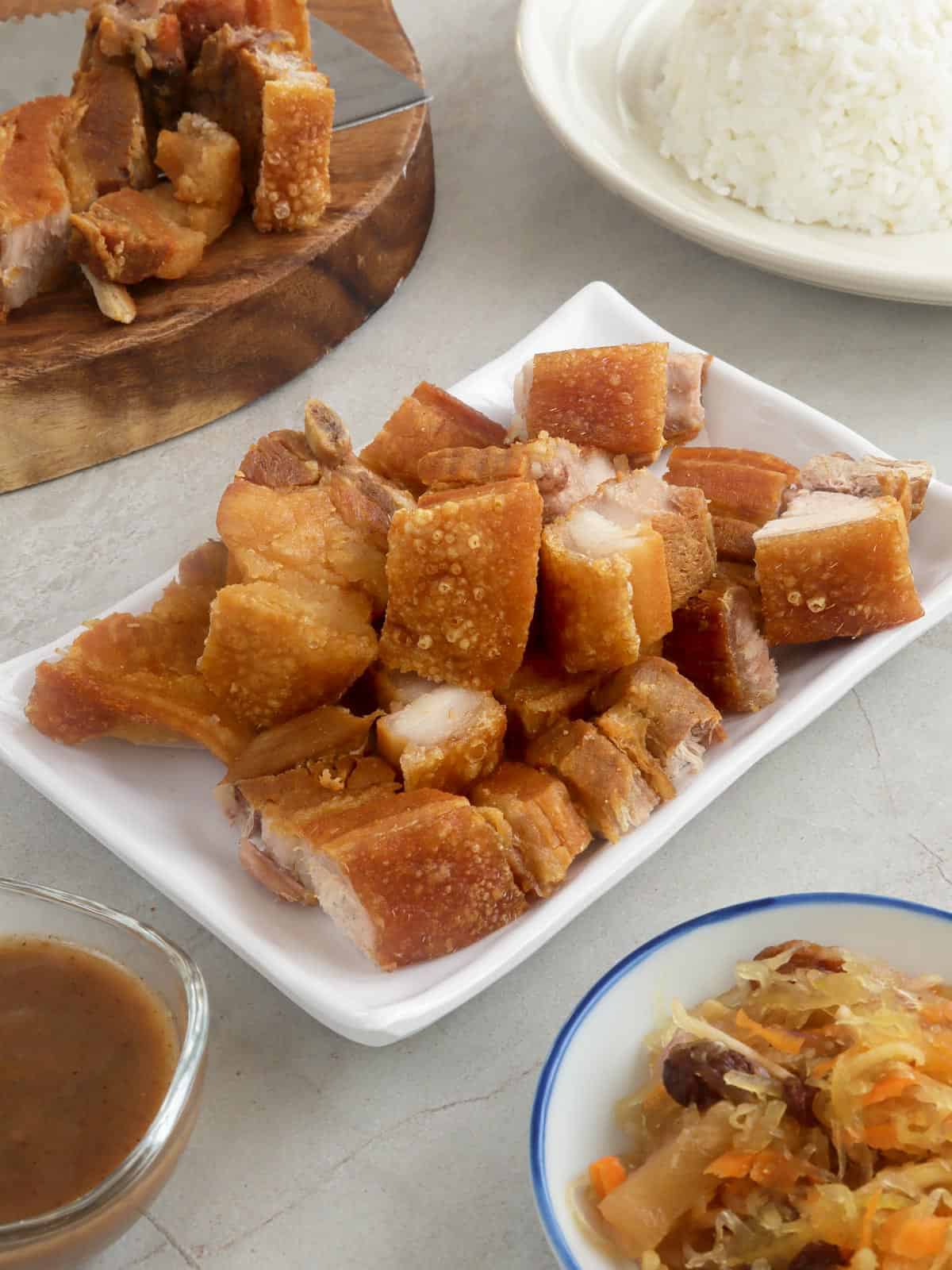
Call me cray cray. After discovering the crispiest rind and the moistest meat on a lechon sa hurno, you'd think I'd never cook lechon in a kawali again.
I mean, really. Who in her right mind would tackle hot oil splattering everywhere when she could have a slab of pork belly crisping nice and quiet in the oven?
In my defense, it was awfully hot this weekend, and I didn't want the oven on all day to cook one piece of pork. Besides, before the advent of lechon sa hurno in my life, I've been praised by my adoring fans (AKA daughter and partner-in-life) for the meanest, best-est lechon kawali ever.
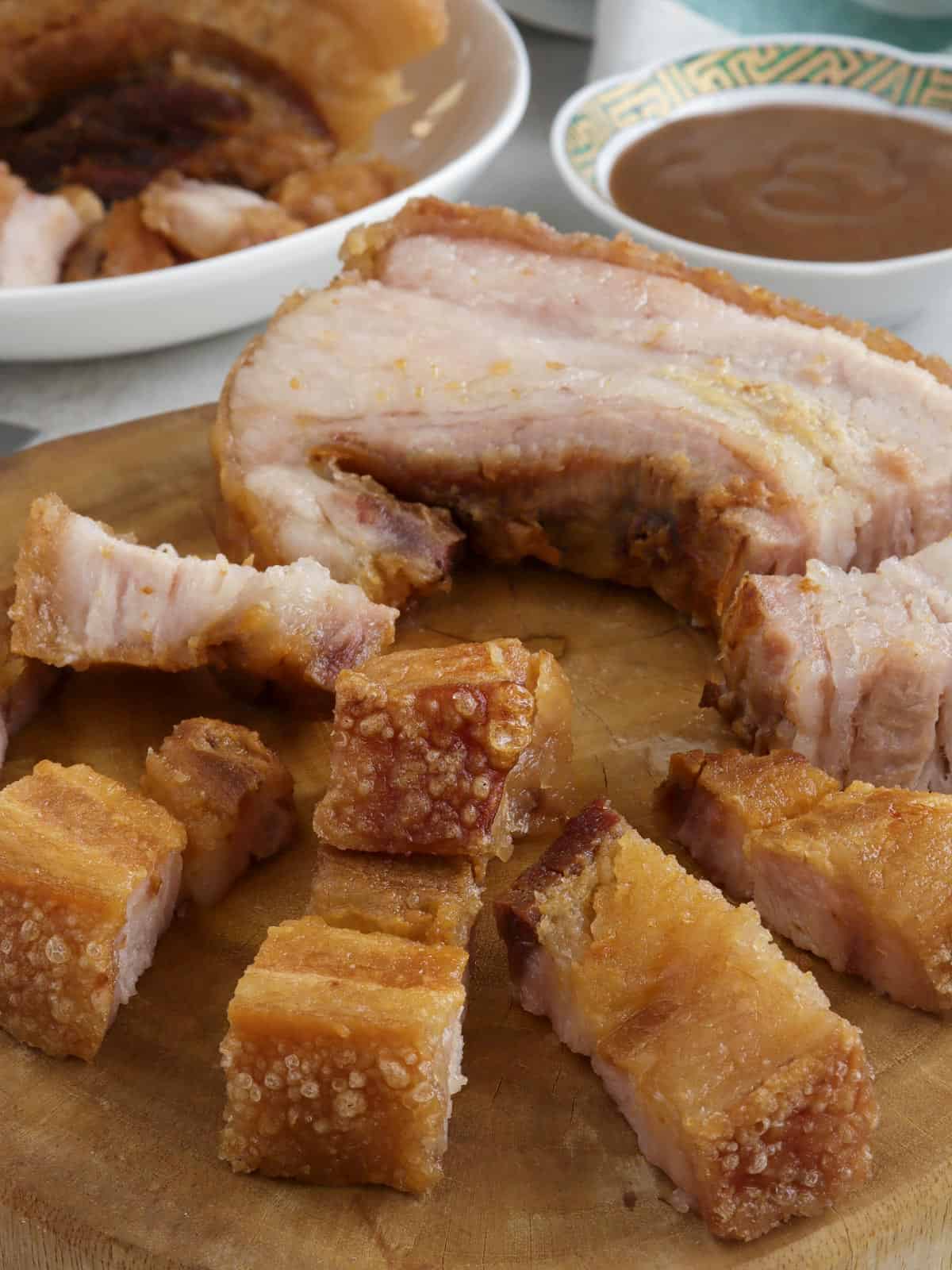
My friends, lechon kawali is not easy, and I implore you to practice caution. But believe me, every sinful morsel of this delectable meat is worth the effort.
See that blistered skin above? Boy, that golden piece of pork belly dream is nothing short of a masterpiece! A series of simple but important steps contribute to achieving that coveted crackling, so read on and learn the secrets. 🙂
Ingredient notes
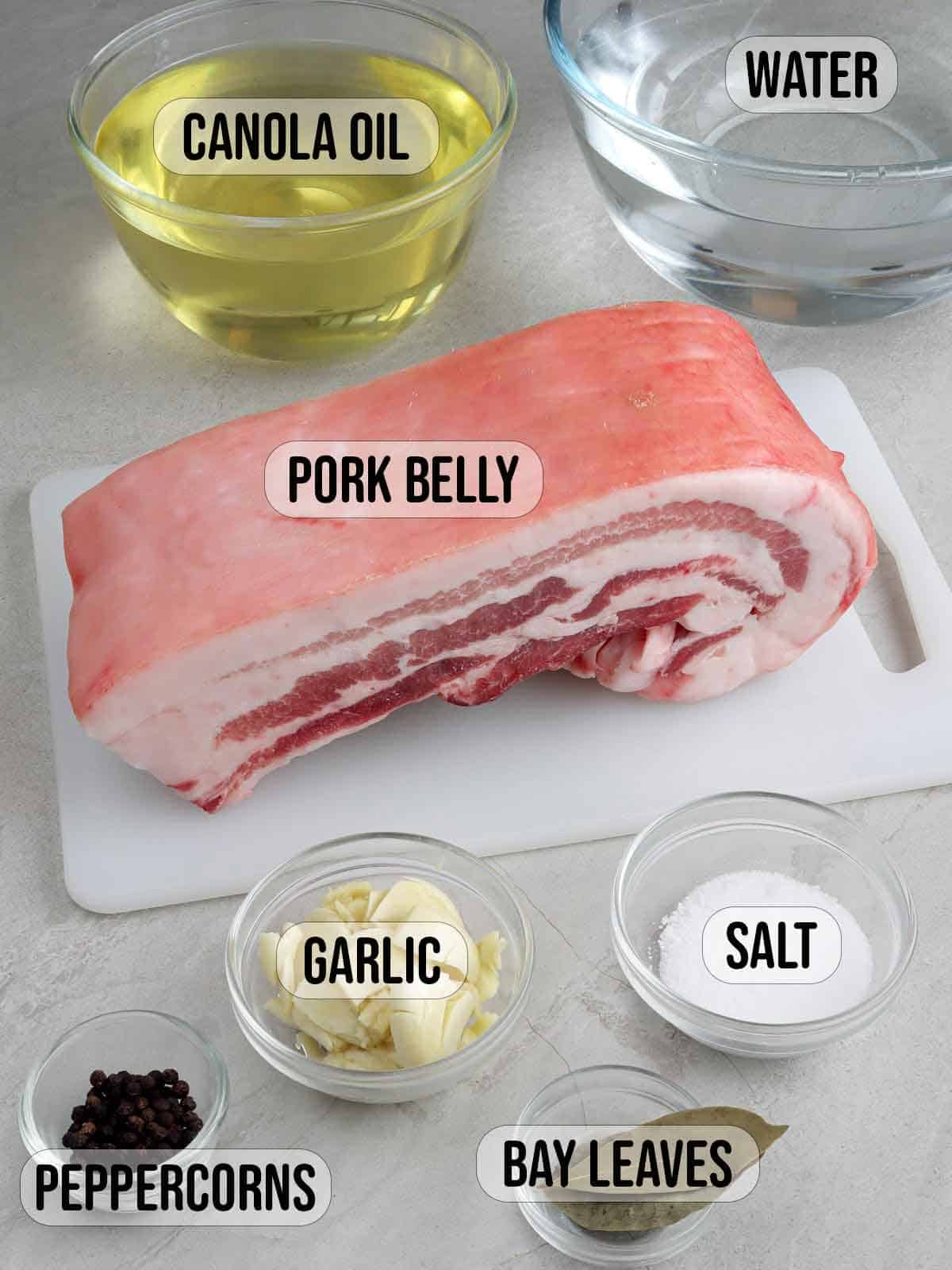
- Pork Belly- with or without ribs will work, but make sure to choose one with a nice cap of skin for the best results.
- Aromatics- When boiling the meat, I like to add crushed garlic cloves, bay leaves, salt, and peppercorns to infuse flavor.
- Vinegar- the acid helps draw out moisture from the skin for better crackling.
- Salt- adds flavor and draws out moisture for better crackling.
- Oil- using the right kind of oil is essential in deep-frying. Choose oils with a high smoke point, such as canola, grapeseed, safflower, peanut, or vegetable oil.
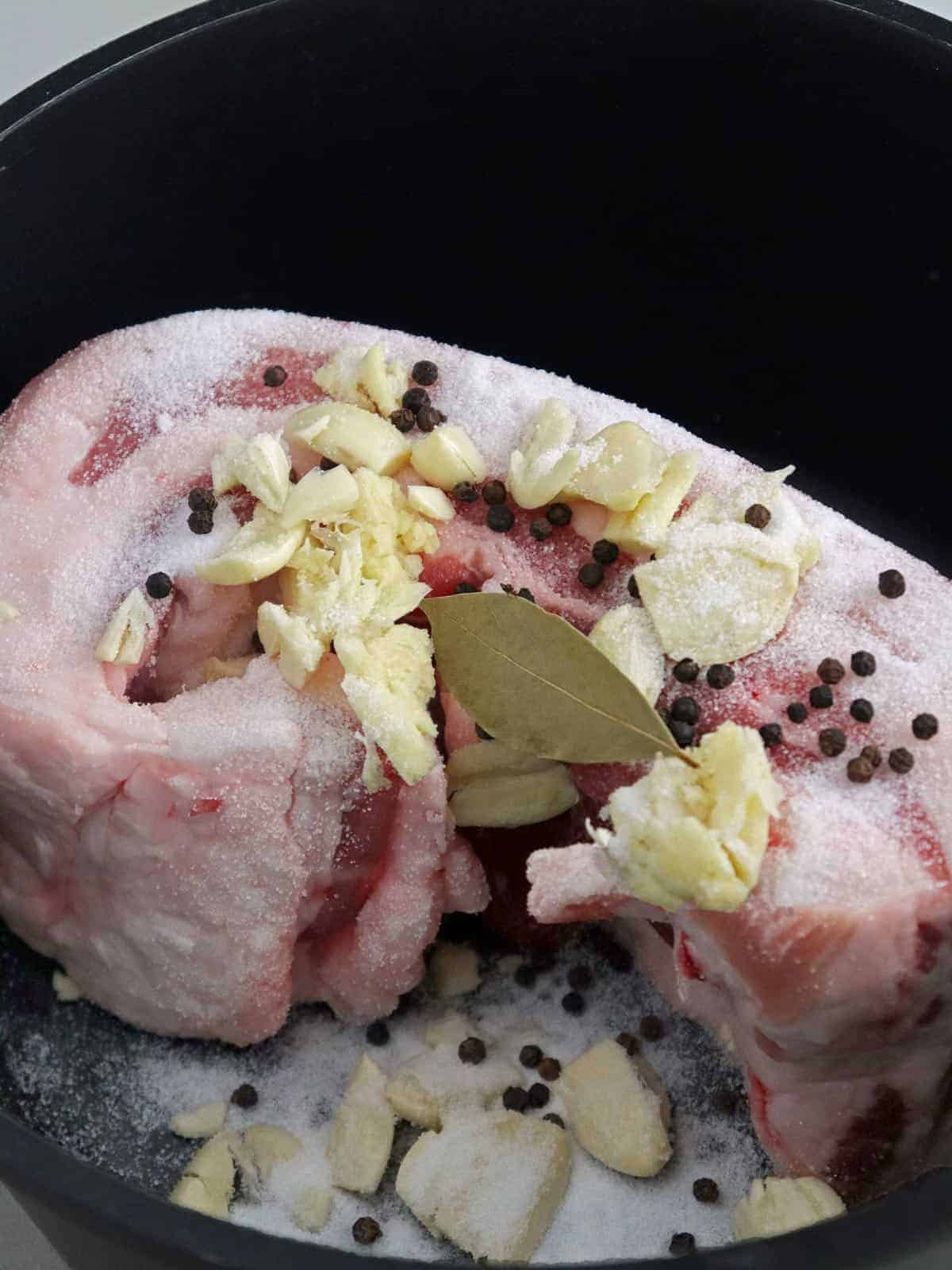
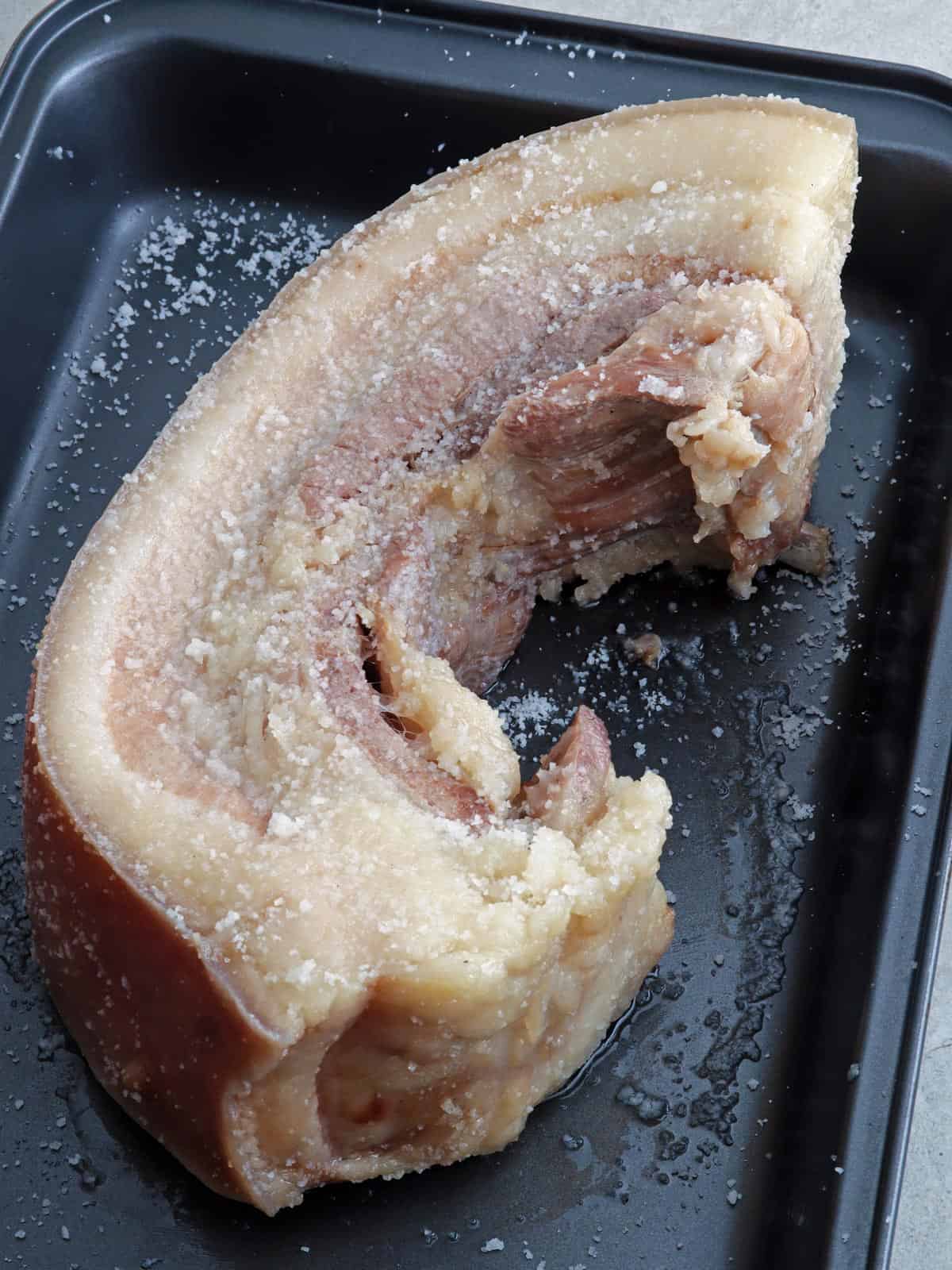
Cooking steps
- Boil the pork until fork-tender but not falling apart. This is to keep the meat moist and not dry and stringy. Remember, it will continue to cook during the deep-frying.
- Cool the cooked pork entirely and pat dry with paper towels.
- Score the skin using the tines of a fork or a knife, ensuring it does not pierce through the meat. Then, brush the skin with vinegar.
- Season the pork belly with salt and top the skin with a thin film of salt to draw out excess moisture.
- Place the pork belly skin side up on a wire rack and refrigerate overnight, uncovered, to chill and air-dry thoroughly.
- For best results, use enough oil to cover the pork belly during deep-frying and keep the temperature at an optimal 350 F to 375 F range.
- You can cut the slab into pieces to fry faster. I suggest cooking it whole to keep the meat moist longer.
- After frying, let it rest for about 3 to 5 minutes before chopping for the juices to redistribute.
Cooking tips
- If you're using bone-in, have the butcher partially cut through the ribs so the pork will be easier to chop once fried.
- You can replace part of the water with Sprite to add more flavor.
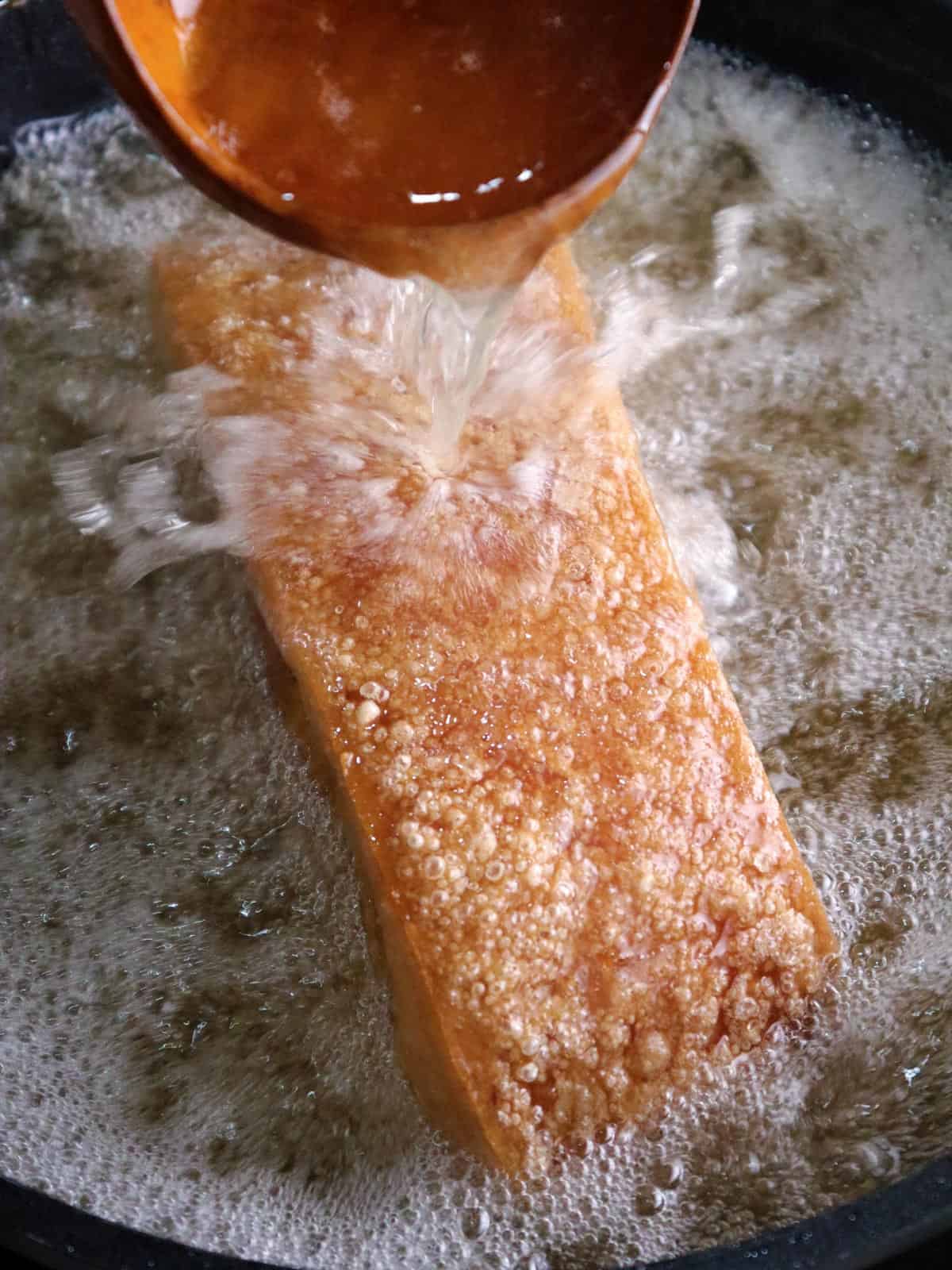
Safe practices
- For safety, use the right pot for the job! Make sure it is deep and large enough to hold the oil and the added volume of the meat without dangerous overflows and splashes.
- Have a splatter screen handy to protect yourself from oil splatters.
- To prevent wild splatters, dry the pork belly well.
- I was taught years ago to continuously sprinkle cold water in the sizzling hot oil while the meat was frying to promote crackling. This method is not for the faint of heart! Although the method works, I found from testing and retesting the recipe that it is unnecessary. Cooling and drying the pork well can achieve the same crunchy texture without the risk of painful splatters.
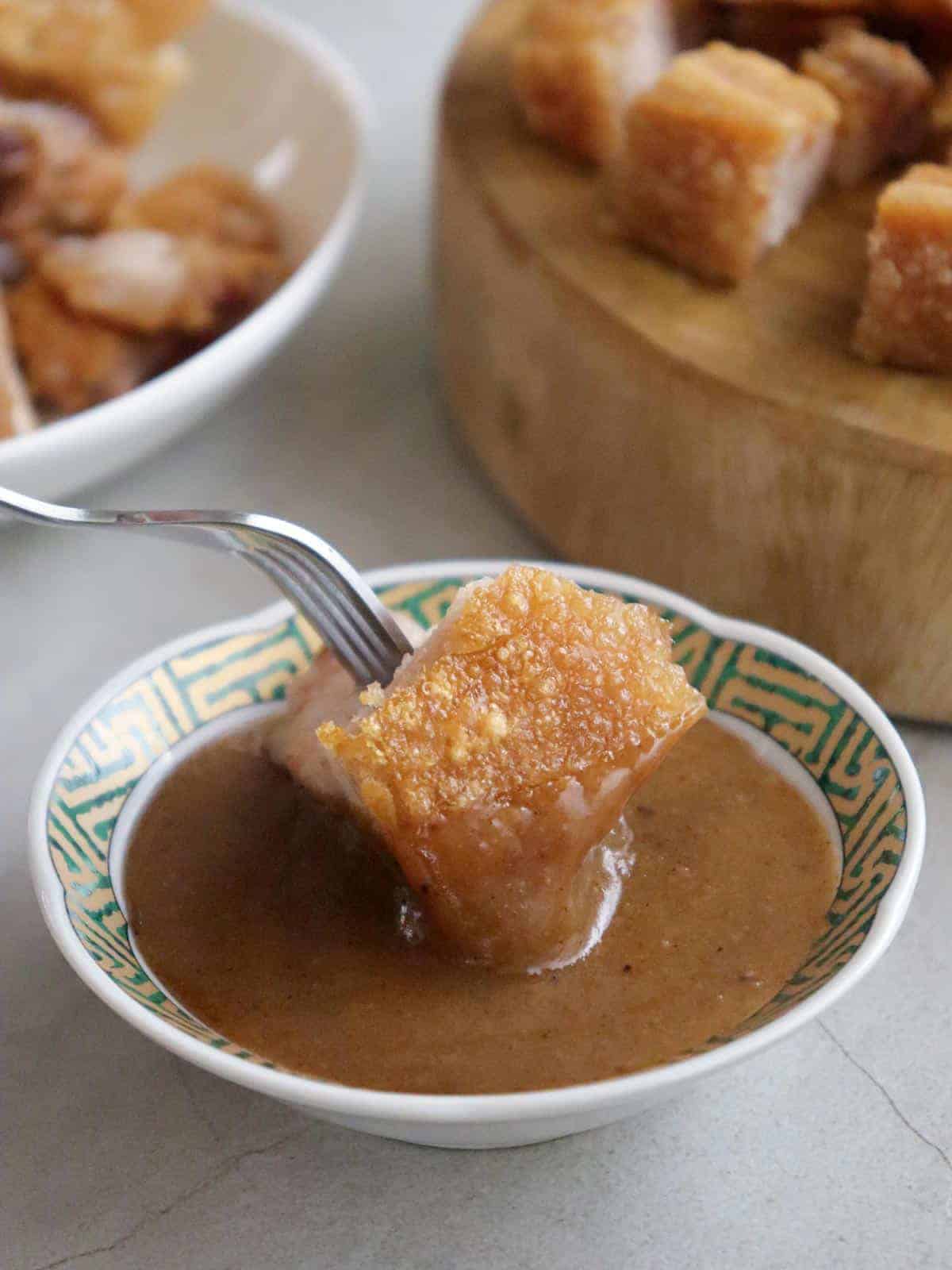
Condiments and dipping sauces
Lechon kawali is commonly served as an appetizer or main dish. It's best enjoyed with a choice of Filipino sawsawan like the following:
- Lechon Sarsa
- Spiced Vinegar (½ cup cane vinegar, one tablespoon soy sauce, one chopped shallot, two cloves minced garlic, two minced bird's eye chili peppers, salt, and freshly cracked pepper to taste)
- Banana Ketchup
- Sweet and sour sauce
- Atchara
Storage instructions
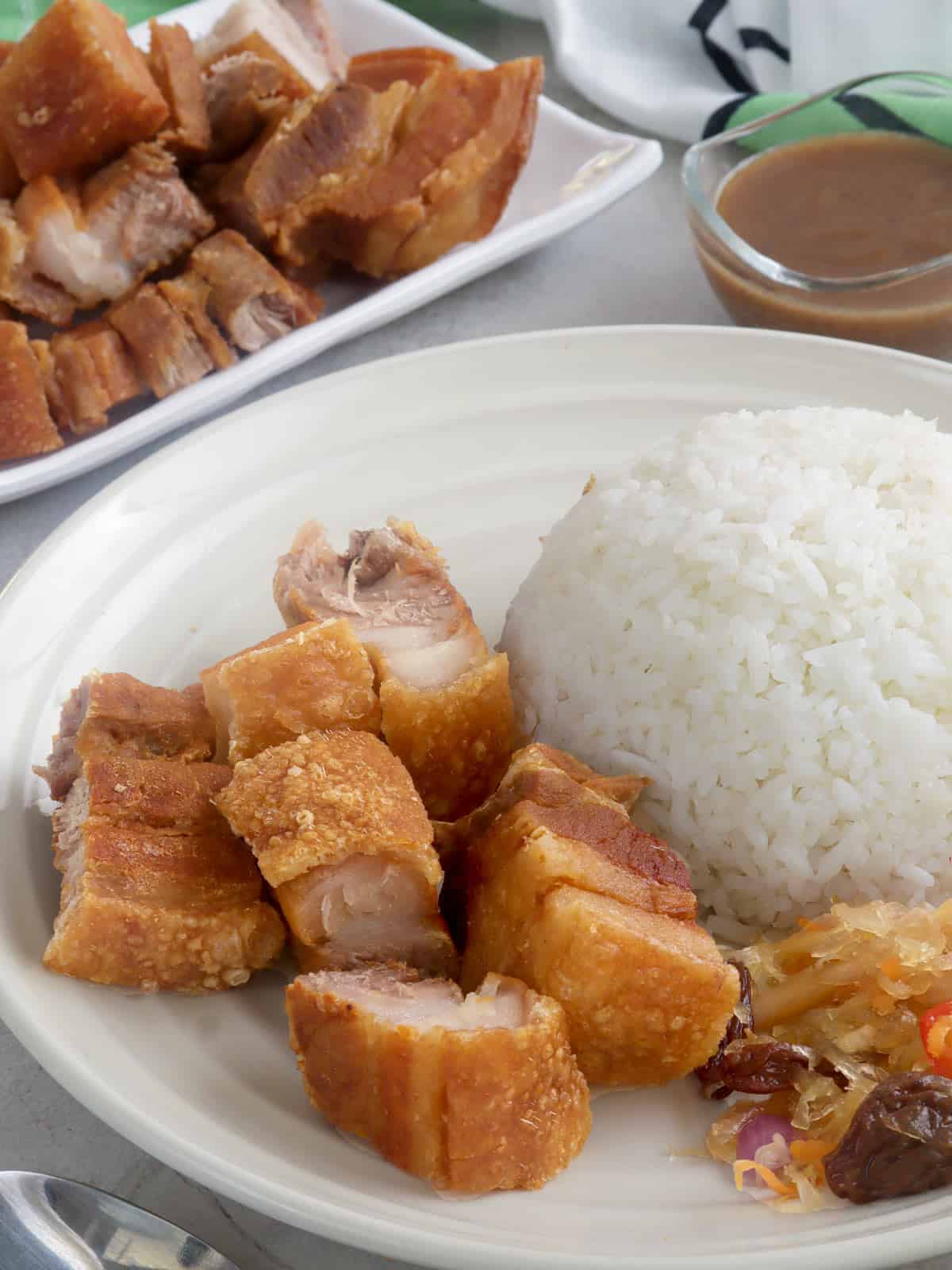
Like most fried foods, this crispy pork belly is most delicious when freshly cooked, as the skin loses its crunch over time. To extend crispness as long as possible, store any fried pieces uncovered.
For best results, fry just enough for a meal. Transfer the remaining boiled pork to a container with a tight-fitting lid and refrigerate for up to 3 days or freeze for up to 3 months. Thaw when ready to fry.
What to do with leftover Lechon
- Turn into crispy sisig or lechong paksiw
- Add to pinakbet or ginisang munggo.
- Use as topping for pancit palabok or pancit guisado
- Make into a crispy version of pork binagoongan or tokwa't baboy
More lechon recipes
Ingredients
- 4 pounds whole pork belly
- 1 head garlic, pounded
- 2 tablespoons salt
- 1 tablespoon peppercorns
- 2 bay leaves
- water
- canola oil
Instructions
- In a deep pot over medium heat, combine pork belly, garlic, salt, peppercorns, bay leaves, and enough water to cover.
- Bring to a boil, skimming scum that floats on top. Lower heat, cover, and continue to cook for about 1 to 1 ½ hours or until meat is fork-tender but not falling apart.
- Drain pork, discarding liquid. Wipe dry, removing any stray aromatics.
- Allow to cool to touch and pat dry with paper towels. Score the skin using the tines of a fork.
- Brush the skin with vinegar.
- Season the pork all over with salt and layer the skin with a thin film of salt.
- Place on a wire rack and refrigerate overnight to completely cool and dry. Remove from refrigerator and scrape off the salt.
- In a deep, heavy-bottomed pot, heat enough oil to completely cover meat to about 350 F to 375 F.
- Carefully place the meat in the hot oil and fry, turning as needed, until golden and skin is crisp and puffed.
- Remove meat from pot and drain on a wire rack set over a baking sheet. Let rest for about 5 minutes and cut into serving pieces.
- Serve with choice of dipping sauce.
Notes
- Have the butcher make a shallow cut through the rib bones to make chopping into serving pieces easier.
- Use enough oil to cover the pork belly during deep-frying, and keep the temperature at an optimal 350 F to 375 F range.
Video

Nutrition Information
“This website provides approximate nutrition information for convenience and as a courtesy only. Nutrition data is gathered primarily from the USDA Food Composition Database, whenever available, or otherwise other online calculators.”

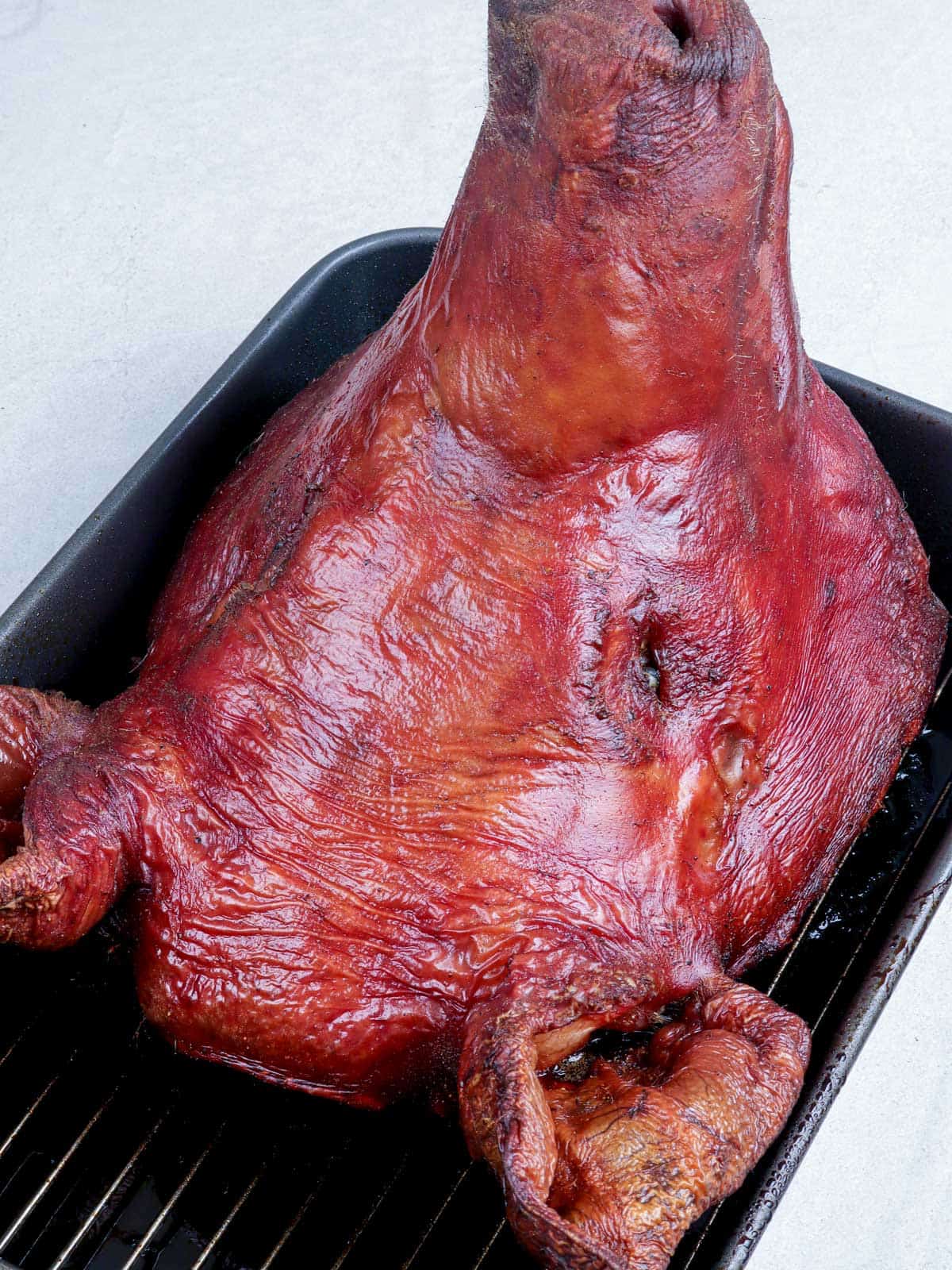
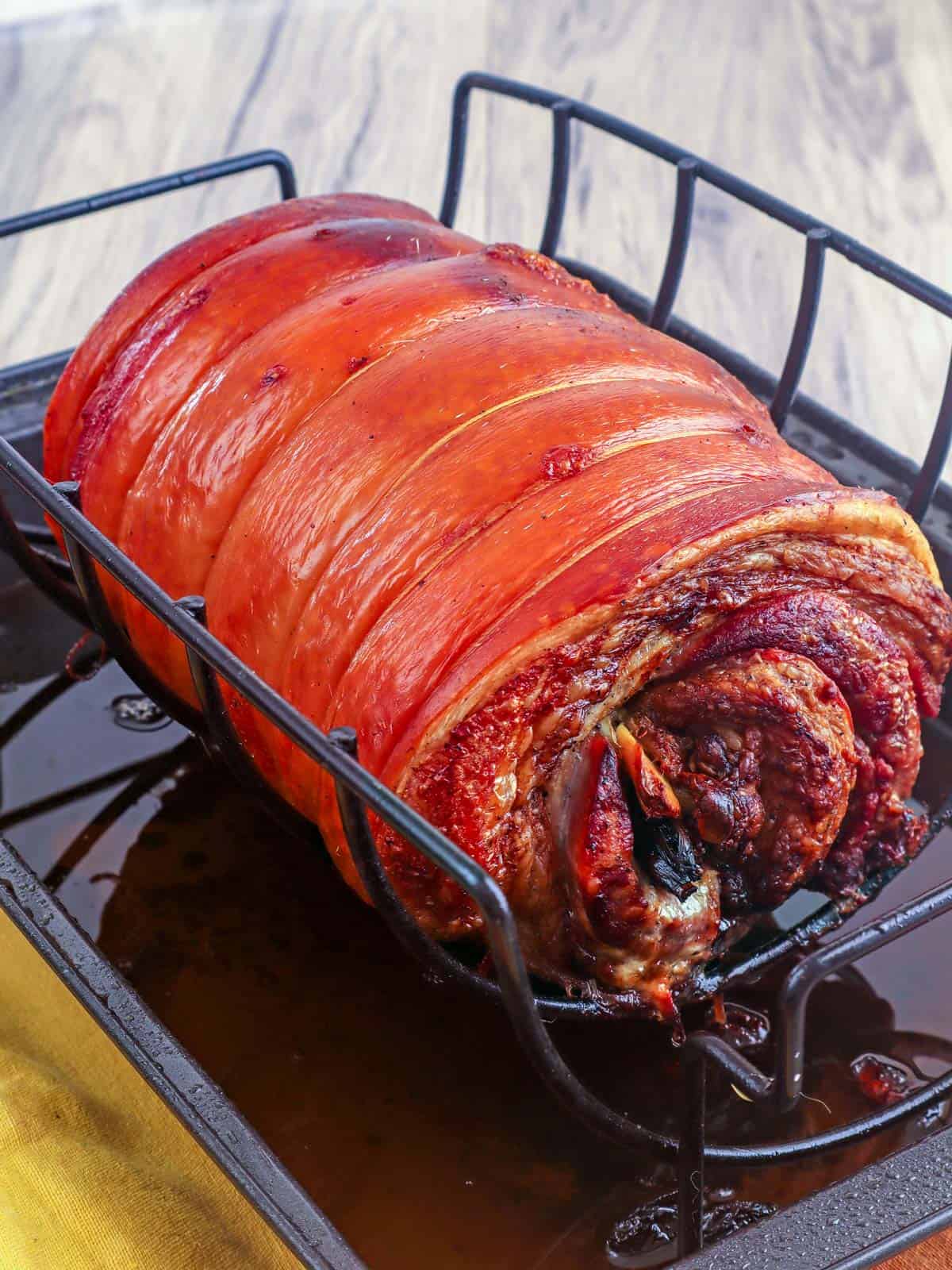
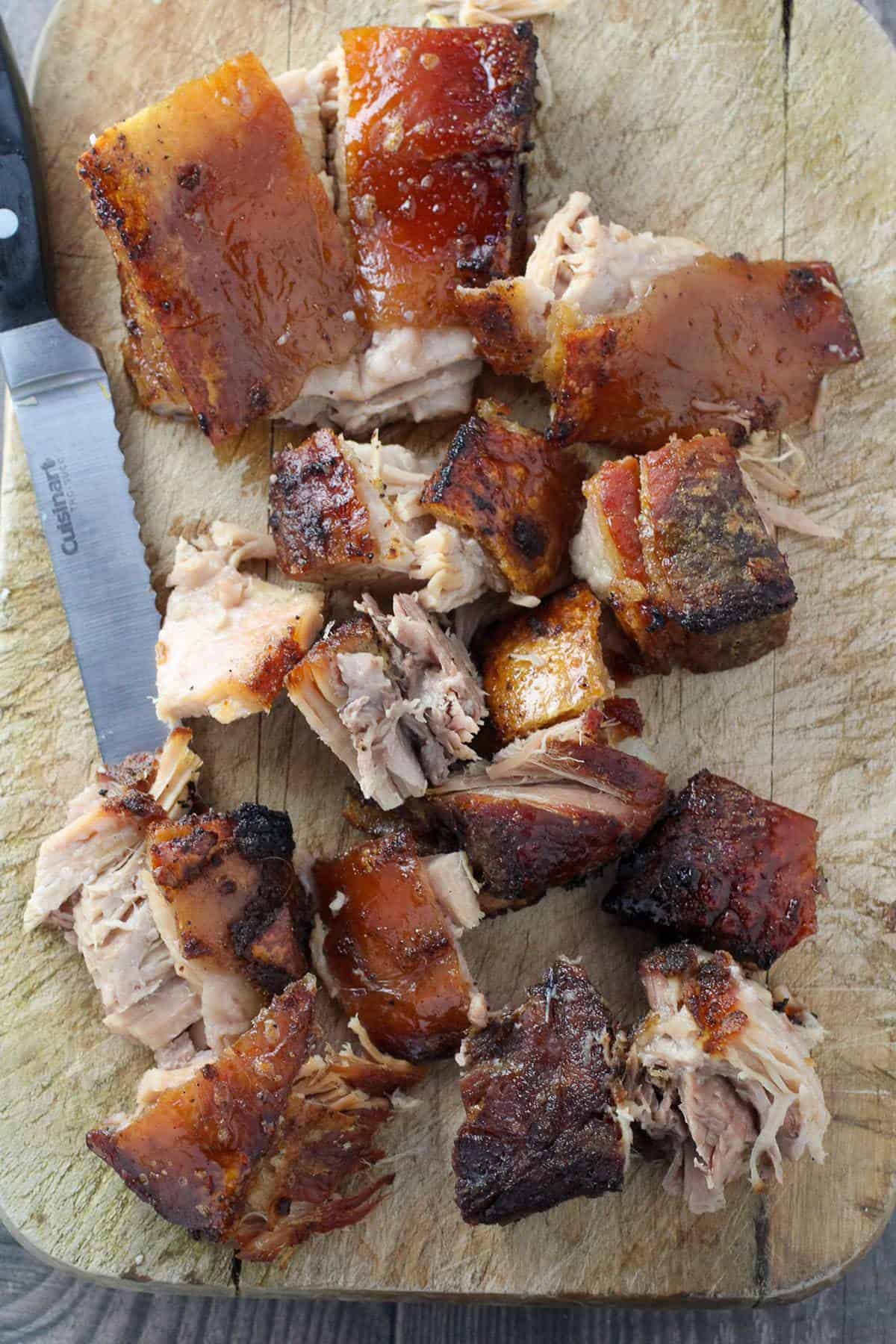
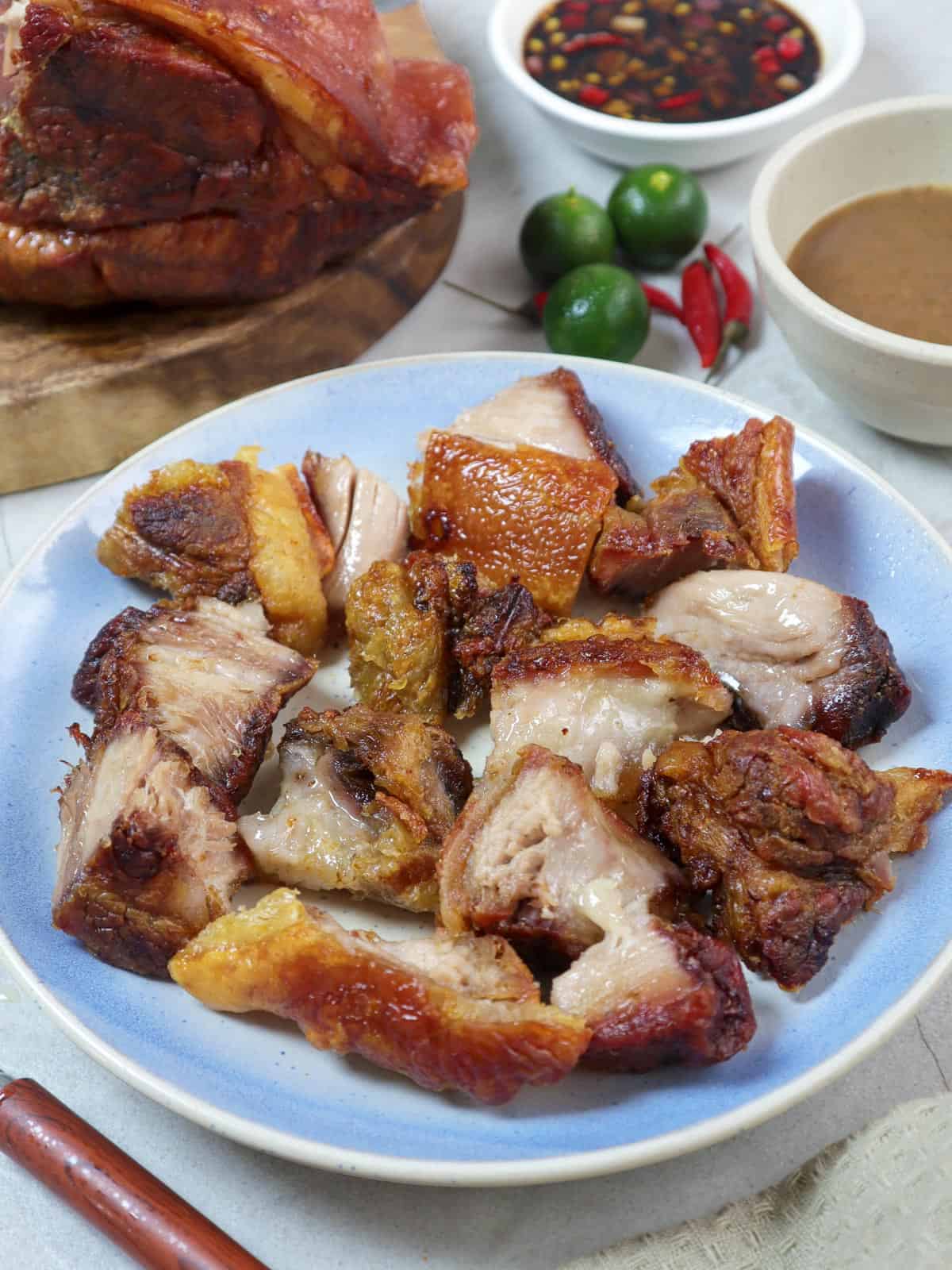
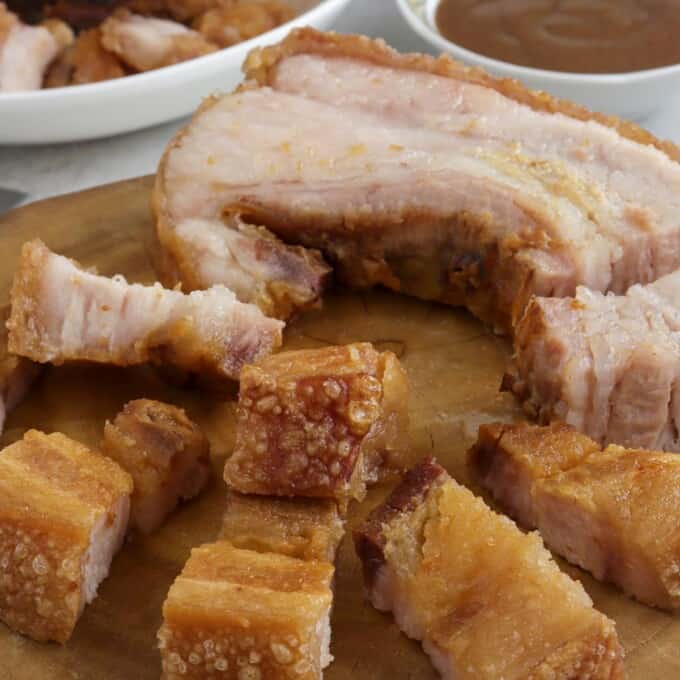
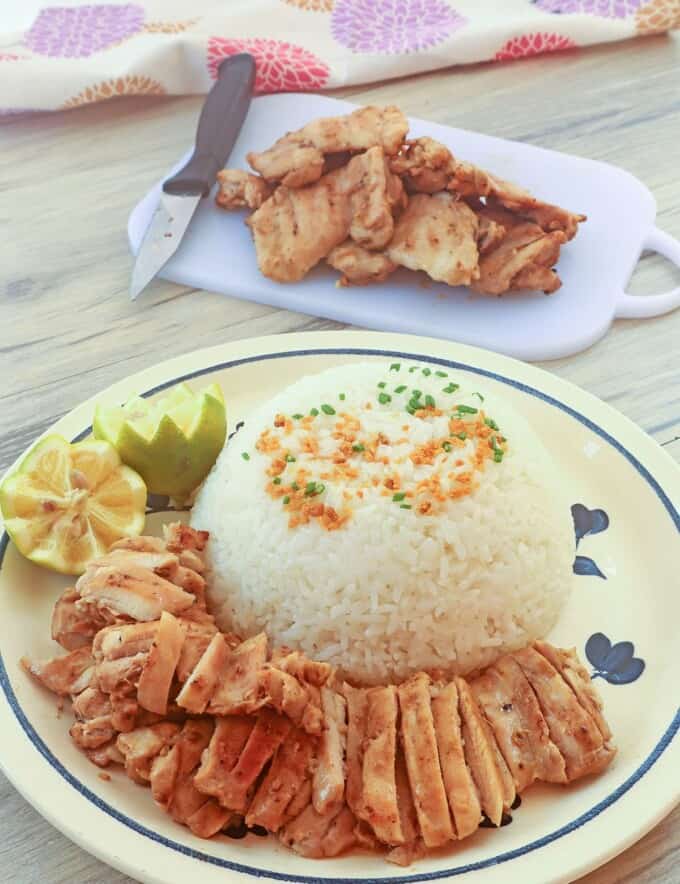

Regan Peter Heinrichs says
Easy, tasty, recipe. Lami Kaayo!
Leng says
Will your recipe work in an air fryer?
Cynthia calacsan says
I used your recipe for lechon pork belly for our 4th of July celebration . It turned out soooo good and my family loved it. I tried some one’s recipe using the air fryer but it was not crunchy at all maybe my timing was off. But I followed your exact time and exact oven temperatures on my convection oven and yummy result. Thanks
Allen says
I have used your recipe here a number of times ever since I fell in love with lechon kawali from a Filipino food truck at a local music event. When I became comfortable with the process, I branched out (deviated) from your traditional process. Some of my "deviations" were successful; others less so.
For my latest adventure, I introduced into the initial boil some jalapeno peppers I had smoked to make them into chipotle peppers. Then, I cold-smoked the whole slab of pork belly using hickory hardwood pellets for 8 hours. The idea was to impart a smokehouse flavor to the meat. So far, so good.
I am now ready for the final step. After cutting the slab into chunks, I will deep-fry the chipotle-infused and smoked chunks according to your original recipe. I will let you know how it turns out!
Allen says
I will admit I am addicted to anything smoked: veggies, cheese, fish, shellfish, various meats. Cheese requires cold-smoking to keep it from melting, but that method can be a bit dicey with any kind of meat. To be safe, I only cold-smoke foods when the ambient temperature is 40 degrees F or below, sort of like smoking inside a refrigerator.
Using the method described above, my lechon kawali had a wonderfully subtle smokehouse flavor, perfect for this cut of meat.
Kay says
I heard it is dangerous to add water into hot oil. Just want to be sure of sprinkling ice water will cause the oil to splatter. I’m using traditional deep frying pot.
Preston says
I am looking forward to trying this so much. Sounds delicious. If you are having it as a main dish what other traditional dishes would you serve it with?
Marelen says
I'm trying this tonight, hope it goes well! Thanks for the recipe.
Justine Villasanta says
I tried but not crispy enough.
Brian says
Hi I made your recipe and loved it but was wondering if you had any suggestions on what I should use the leftover broth for from the initial boil? Is there a recipe on your site that might use this?
Lalaine Manalo says
You can use it in soups or stews. Just use the broth in place of water.
Allen says
I, too, am reluctant to throw out any sort of flavored broth without doing something with it. I have concocted a few different recipes and have found the important thing is to let the broth cool thoroughly - even in the refrigerator - to allow the fat to congeal on the surface. Then I skim the excess fat off, leaving just the broth. For my last recipe, I added baby golden potatoes sliced in half (to better absorb the flavor of the broth) along with commercially-prepared sausage balls and a can of black beans. Perfect for an evening meal on a cold winter evening.
Cristina Higa says
Hi Lalaine,
I'm making this on New Year's Eve. Do you cover the kawali while frying? Thank you!
Lalaine Manalo says
You can use a splatter screen to protect from the splatters.
Cheska Balbastro says
Hi! How about if I prefer cooking it in the oven? Tips please, or procedures is even better 😊
Lalaine Manalo says
You can try this recipe https://www.kawalingpinoy.com/slow-cooker-lechon/